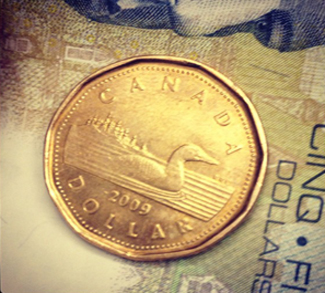Surging exports have helped bring Canada’s current account into positive territory for the first time since 2008.
Broadly, the current account tracks the sum total of imports and exports of goods and services, resulting in either a surplus (denoting a net exporter) or a deficit (a net importer).
Canada’s current account stayed in surplus territory throughout the previous commodity super-cycle of the 2000s, before plunging into deficit during the Great Recession, where it has languished up until now. Some are even taking this recent return to surplus as evidence of another commodity super-cycle in the making; however, a closer look at the data suggests that Canada’s surplus honeymoon may end up being short-lived.

Canada’s Q1 current account balance came in at a surplus of $1.2 billion, up dramatically from the $7.3 billion deficit recorded in Q4 2020.
Two reasons stand out for the surprise current account surplus. First is the lack of an expected deficit in the services trade, which has plummeted in terms of both imports and exports during the COVID era. Nowhere is this more apparent than in the tourism sector, which saw its usual deficit erased by Canadians looking in-country for their (limited) travel options and a near total lack of foreign tourists due to border closures. For example, over the Q1 2020, Canada posted a whopping $8.6 billion deficit in the services trade; by Q4 2020, it was posting a 400 million surplus. Over the course of 2020 as a whole, tourism spending dropped by 48%, and though tourism spending by Canadians also declined in absolute terms, domestic tourists unsurprisingly dwarfed their foreign peers, causing the overall proportion of intra-Canada tourism to increase from 78.4% in 2019 to 92.7% in 2020.
Similar COVID-related distortions took place up and down Canada’s services trade, such that it stands to reason that Canada’s $450 million services surplus of Q1 2021 will be short-lived, likely sinking back into deficit as global trade in services normalizes, particularly with regard to the southern border with the United States.
Canada’s Q1 2021 current account surplus was also fueled by strong foreign demand for Canadian exports, namely oil and lumber, and the broad trend of rising commodity prices amid post-COVID economic normalization. Here the data is rather stark: After posting a $9.2 billion deficit in goods trade for Q4 2020, Canada’s balance bounced to a $1.184 surplus in Q1 2021 – the first goods surplus since Q4 2016.

The uptick in exports is a discernible trend, picking up through March following a pronounced dip in February. However, before any declarations of a new commodity super-cycle can be made, it’s worth noting that most of these gains are in nominal rather than real terms. Volumes are not increasing dramatically; rather, it’s prices that are going up due to inflation across a broad swathe of manufacturing inputs, some of which happen to be Canada’s primary exports.
The upward swing in prices is reflected in the Bank of Canada’s commodity price indices, which track price fluctuations among Canada’s primary commodity exports, including energy, coal, oil, lumber, pulp, wheat, corn, zinc, iron, and copper, among others.

The divergence between real and nominal growth is also reflected in this week’s Q1 2021 GDP numbers for Canada, where results disappointed with 1.4% Q1 growth in real terms, down from the 2.2% growth of Q4 2020. In nominal terms however, which takes rising prices into account, quarterly GDP expanded by 4.3%. Year-on-year, the Canadian economy grew by 5.6%.




